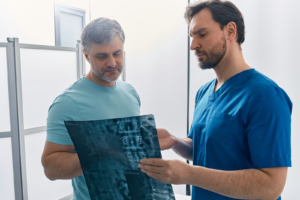How Three-Dimensional Printers Help With Medical Imaging

Since the discovery of the X-ray at the end of the 19th century, medical imaging technologies have evolved and developed intensely, providing doctors with the increasingly detailed information they need to diagnose diseases and prescribe appropriate treatments.
However, improvements in imaging technologies have not only helped the understanding of doctors but also of patients as well, with a three-dimensional image often helping shed a brighter light on a medical issue than an X-ray to someone without the radiography knowledge to interpret this.
In some cases, that is not necessary, as certain conditions and medical maladies are obvious with an X-ray, but sometimes it can be difficult to visualise either a medical concern or a potential treatment without a three-dimensional aid, and some doctors are adding tactility to this as well.
Three-dimensional printers have seen a lot of use in the medical world, particularly in the field of dentistry where 3D printing is sometimes used in place of traditional dental impressions and as part of the CEREC process of creating dental crowns.
Increasingly, however, doctors in other fields are printing 3D models of CAT scans to show the location of issues such as blood clots, tumours, ulcers and other issues that are sometimes difficult to visualise even with the help of a visual display.
They can also, according to a 2022 study, help with the planning of complex medical procedures, as well as with education, as it highlights the specific differences between the anatomy of different patients and allows for more involved patient-centred planning.
Whilst outside the scope of imaging, diagnosis and treatment planning, 3D printing is also used to create patient-specific medical devices that are designed specifically with their body in mind with exceptional potential for tailored medical treatments in the future.
In the present, whilst not every doctor needs or wants to use 3D imaging as part of their explanations of diagnoses to patients, it can sometimes be beneficial to thier understanding to use a visual aid.